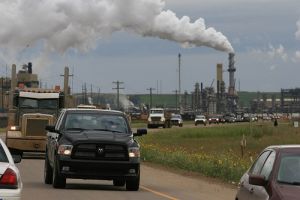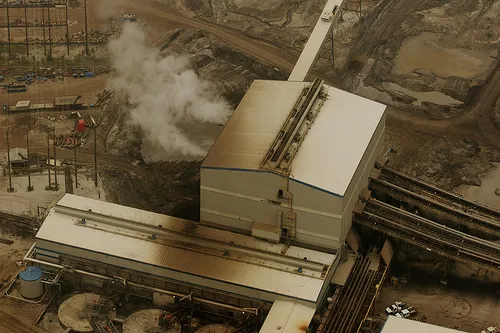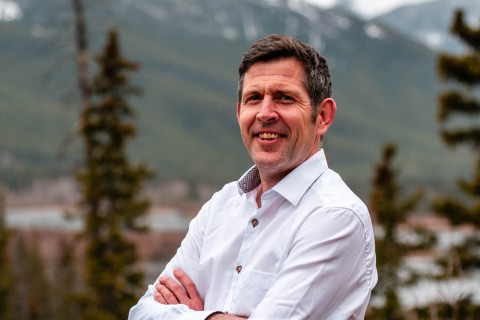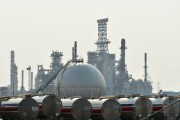This week, the Pembina Institute reviewed a package of documents obtained under Alberta’s Freedom of Information legislation about future Alberta and federal greenhouse gas regulations.
The documents cover correspondence between the oil and gas industry association — the Canadian Association of Petroleum Producers (CAPP) — and Alberta’s environment ministry from January to May of this year. Obtained by Greenpeace’s Keith Stewart, the documents formed the basis of a report from the CBC.
First off, their contents raise real concerns about the potential weakness of the future federal emissions regulations for the oil and gas sector. CAPP’s proposal is very weak, offering little more than a token increase from Alberta’s current regulations. Today, heavy industry facilities in Alberta face a 12 per cent emissions intensity target and a maximum price of $15 a tonne. Alberta’s regulations sunset next year and must be renewed; CAPP would like to see the next set of regulations moved to a 20 per cent target and a $20 a tonne price in 2020. (If Alberta had indexed its $15 a tonne price to inflation when it went into effect in 2007, it would likely reach $19 a tonne by 2020 — so a $20 price in 2020 is a token increase at best.)
CAPP’s negotiating position has been reported before, so that’s not new. What these documents add is economic modelling of the impacts of that proposal, which would see oilsands emissions grow from 55 million tonnes (Mt) today to between 95 and 98 Mt in 2020. The cost to companies would grow from 10 cents a barrel today to a maximum of 23 cents a barrel. Overall, the proposal would fail even to achieve Alberta’s 2020 target — a goal that’s far weaker than the 2020 target Ottawa has adopted.
The industry’s briefing notes also stake out new positions in a couple of important areas: social license and the role of technology in improving the oilsands industry’s environmental performance.
- On “social license,” meaning public support for their operations: In these documents, CAPP says that stronger rules are “unlikely” to improve the public’s perception of their industry. “The objection to the oilsands is ideological,” they write, so even if the strongest proposal on the table went into effect, “oilsands opponents would claim that they too were insufficient.”
For the record, we should note that when news of Alberta’s 40/40 proposal broke in April, we wrote that it “is encouraging, and it shows leadership.” The standard we used to assess that proposal, and any other proposal on the table, is whether it’s strong enough to help get Canada on track for its 2020 climate target. Since the federal government says it remains committed to that target, we think it’s an entirely appropriate way to assess the effectiveness of potential regulations for the sector. We also think that most Canadians would be supportive of the oilsands industry doing their fair share to reduce emissions.
- On technology: Throughout its memo, CAPP objected to the proposals that would see a higher technology fund price — and thus leverage more technology deployment and innovation, two things they say publicly they want to support. Instead, CAPP’s private briefing note told the Government of Alberta that technology development is a cost to industry that affects the sector’s “near term competitiveness.”
 CAPP also makes the claim that the oilsands won’t reduce its emissions more quickly no matter which policy the government chooses, because “current technology is not yet available for deployment to a significant degree.” Thus, its own modelling concludes that the oilsands would reduce its emissions just 2 Mt below business as usual — in absolute terms, that means growing 100Mt rather than 102 Mt in 2020, a huge increase from 55 Mt today — under any of the scenarios for oil and gas sector regulations described in these documents.
CAPP also makes the claim that the oilsands won’t reduce its emissions more quickly no matter which policy the government chooses, because “current technology is not yet available for deployment to a significant degree.” Thus, its own modelling concludes that the oilsands would reduce its emissions just 2 Mt below business as usual — in absolute terms, that means growing 100Mt rather than 102 Mt in 2020, a huge increase from 55 Mt today — under any of the scenarios for oil and gas sector regulations described in these documents.
Pembina’s primary concern with regards to the oilsands has always been the cumulative impact of the oilsands which is driven by the pace and scale of development. While technology can help to drive down the carbon intensity of a barrel of oilsands crude over time, as CAPP itself shows it’s no panacea. The best way to control absolute greenhouse gas emissions is to manage the pace and scale of development — something governments and companies are reluctant to discuss.
Unhelpful to the case for the Keystone XL pipeline?
Interestingly, the industry’s briefing note also seems to undercut one of the key arguments for the Keystone XL pipeline.
This one takes a bit of explanation. The context is that President Obama said in June that he would only approve Keystone XL if it won’t significantly increase greenhouse gas emissions. Right now, the U.S. State Department’s draft environmental assessment says the pipeline would have virtually no impact on greenhouse gas emissions because oilsands crude will find a way to market with or without Keystone XL. State’s analysis assumes that rail adds about $5 a barrel in extra costs to oilsands producers, relative to moving oil in a pipeline. In public, oilsands companies have been saying that rail is a viable option for them, one that allows the oilsands to keep expanding production.
In its private briefing note, CAPP says that a stronger environmental regulation would increase costs, “possibly lowering investments and reducing production.” Elsewhere in the briefing note, CAPP writes that under stronger regulations, “projects on the margin will be cancelled. Investments will go elsewhere.” CAPP concludes with a rhetorical question: “Will higher stringency requirements impact production and revenue? Very likely.”
But the most stringent proposal in these documents — Alberta’s 40 per cent target and $40 a tonne technology fund price — would add less than a dollar a barrel in new costs to oilsands companies.The most stringent proposal in these documents — Alberta’s 40 per cent target and $40 a tonne technology fund price — would add less than a dollar a barrel in new costs to oilsands companies.
There is no way to square those two perspectives. How does a dollar-a-barrel increase to address pollution curb oilsands production, while a five-dollar-a-barrel increase to ship oilsands by rail represents an insignificant cost that allows production to grow?
Industry can’t have it both ways.
To us, it seems clear that building a pipeline like Keystone — which provides oilsands companies lower-cost access to desirable markets — would create favourable conditions for oilsands expansion and the associated greenhouse gas emissions.
None of the proposals on the table is likely to be strong enough to get Canada on track for its 2020 target.
Oilsands emissions grow significantly in all the scenarios on the table. The most stringent proposal would see at least a 60 per cent increase in emissions, reaching 88Mt in 2020 from today’s level of 55Mt.
But the Government of Alberta also looks at the total effect of these policy options on the province’s emissions and compares that to Alberta’s 2020 and 2050 climate targets. While none of the proposals would get Alberta on track for its 2050 target, both the federal and provincial proposals (as opposed to CAPP’s) could be strong enough to hit Alberta’s 2020 target.
We think these regulations should be designed to achieve our climate targets, so it’s heartening to see Alberta asking the right questions in the documents. Unfortunately, Alberta’s target is much weaker than Ottawa’s: Alberta allows provincial emissions to grow by over 25 Mt from the 2005 level, while Ottawa’s target requires national emissions to drop by 125 Mt from the 2005 level. So it’s safe to say that a regulation that only just achieves Alberta’s target is likely too weak to achieve Ottawa’s target.
Overall, what we read in these documents gives us real concern about the way these negotiations are heading. Getting the rules for oil and gas right is a make-or-break moment for Canada’s climate credibility. We need tough, effective rules to have any chance of hitting our national climate target in 2020.
In our view, strong rules are in the oilsands industry’s own best interests: as it stands today, the sector is facing tough questions about its environmental track record and doesn’t have good enough answers to give.







